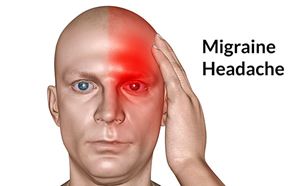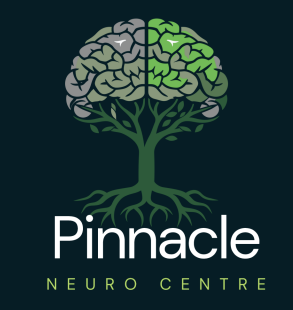Migraine Treatment
From a neurologist’s perspective, migraine treatment aims to reduce attack frequency, severity, and disability while improving quality of life. Migraine, a neurological disorder, involves recurrent, often unilateral headaches with nausea, photophobia, or aura, driven by cortical spreading depression and trigeminovascular activation. Neurologists tailor management to acute attacks and prevention, guided by patient-specific factors like frequency, comorbidities, and triggers.
Migraine treatment focuses on relieving symptoms and preventing future attacks. It includes medications such as pain relievers, triptans, and anti-nausea drugs for acute relief, and preventive options like beta-blockers, antidepressants, or CGRP inhibitors. Lifestyle changes, stress management, regular sleep, and dietary adjustments also play a key role in managing migraines. Treatment plans are tailored based on migraine frequency, severity, and individual response.

Acute Treatment: Early intervention is critical. Over-the-counter NSAIDs (e.g., ibuprofen) or acetaminophen suffice for mild attacks. For moderate-to-severe migraines, triptans (e.g., sumatriptan, rizatriptan) are first-line, targeting serotonin receptors to constrict vessels and inhibit pain pathways. Oral triptans suit most patients; nasal sprays or injectables offer faster relief for rapid-onset attacks. Neurologists caution against overuse (more than 10 days/month) to prevent medication-overuse headache. Adjuncts like antiemetics (e.g., metoclopramide) manage nausea. For refractory cases, calcitonin gene-related peptide (CGRP) receptor antagonists (e.g., ubrogepant, rimegepant) provide non-vasoconstrictive options, safe for patients with cardiovascular risks. Emergency settings may use IV dihydroergotamine or ketorolac, with neurologists monitoring for side effects like chest pain or sedation.

Preventive Treatment: Indicated for frequent (>4 attacks/month), disabling, or prolonged migraines. Beta-blockers (e.g., propranolol) and anticonvulsants (e.g., topiramate, valproate) reduce neuronal excitability, with topiramate favored for efficacy but requiring cognitive side effect monitoring. Tricyclic antidepressants (e.g., amitriptyline) suit patients with insomnia or depression. CGRP monoclonal antibodies (e.g., erenumab, fremanezumab), administered monthly, are highly effective for chronic migraine, targeting the CGRP pathway with minimal side effects like injection-site reactions. Botox (onabotulinumtoxinA) is reserved for chronic migraine, reducing attack frequency after 12-week cycles. Neurologists titrate doses slowly, assess response over 2–3 months, and adjust for tolerability, avoiding polypharmacy.
Non-Pharmacological Strategies: Trigger identification (e.g., stress, sleep disruption, caffeine) through headache diaries guides lifestyle changes. Cognitive-behavioral therapy and biofeedback reduce stress-related attacks. Regular sleep, hydration, and exercise are emphasized. Neuromodulation devices, like transcutaneous supraorbital stimulators, offer adjunctive relief for non-responders. Neurologists advocate acupuncture or mindfulness for select patients, though evidence varies.
Monitoring and Comorbidities: Regular follow-up tracks treatment efficacy and side effects. Neurologists screen for depression, anxiety, or sleep disorders, which exacerbate migraines. Patient education on realistic expectations and adherence prevents overuse or discontinuation. For refractory cases, clinical trials explore novel therapies like PACAP inhibitors. Personalized, multidisciplinary care ensures optimal migraine control and functional restoration.
